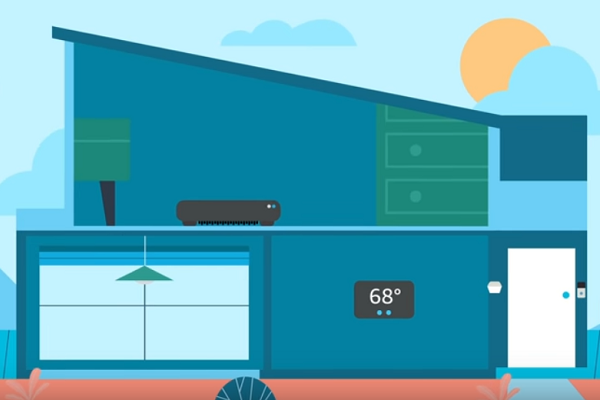Alexa Can Now Adjust Your Smart Home Devices Without Needing to Ask Permission
Alexa device owners can now set the voice assistant to operate smart devices without asking permission every time. Amazon rolled out the proactive Alexa Hunches option to users this week, about a month after previewing it for manufacturers of Alexa-enabled smart home devices.
Intuitive Alexa
Alexa Hunches are an analytical feature for the voice assistant, first announced in 2018, that enables the AI to observe user behavior and look for patterns. The voice assistant can then suggest scheduling when lights or thermostats are active. If approved, Alexa could then arrange to turn on lights or heat based on time or specific circumstances, like if electric curtains linked to a smart plug are shut. It gives the AI some agency in trying to better serve the humans in the household, albeit with the user as a checkpoint before any action is taken. The proactive option means owners can choose to let Alexa act on its Hunches and run the smart devices without first checking with a human. The idea is that being asleep or away from home doesn’t mean Alexa can’t carry out the tasks that the voice assistant anticipates you’d want.
As we mentioned when it first previewed, proactive hunches fit into the overall improvements to Alexa’s AI that Amazon talked about last fall, especially the latent goal inference that the AI uses to extrapolate what users want. Amazon wants users to trust Alexa enough to personalize it, whether through the observations that lead to hunches or more directly with the Teachable AI feature. Latent goal inference enables Alexa to extrapolate more of what a customer wants based on hints in other questions, like suggesting a timer when asked how long a certain dish takes to cook.
Guarding Efficiently
The proactive hunches were announced as part of a package of new smart home capabilities for Alexa. On the Alexa app, users can check the dashboard to see and how much power Alexa-connected devices are using and an estimate of how much they may use in the coming weeks. Like the new hunches, the Alexa Energy Dashboard was also previewed last month for developers, which makes sense since it needs their permission to scrape and share its data. A good many manufacturers have already given their permission, and it’s likely to become a standard element for smart home devices that want an Alexa connection.
Amazon also debuted its new Alexa Guard Plus security system. A $5 a month subscription service upgrading the almost two-year-old Alexa Guard service, Guard Plus sends notifications to users if an Alexa device hears anything suspicious and can also alert human agents capable of calling the police or emergency services. Though the announcement didn’t mention the in-home security drone revealed during Amazon’s hardware event last year, a connection would make sense. The drone will be able to fly through your house while streaming video on what it sees. Being able to detect suspicious noises and dial home security services would mesh perfectly.
“We want our Alexa-enabled devices and services to create an experience that is proactive but not pushy, personal but also communal, both predictable and on-demand, and built with privacy at the foundation,” Amazon wrote in a blog post about new features for the year. “In 2021, this will continue to be a big priority for us as we seek ways to ensure customers have the right balance of personalization and proactivity to power their unique Alexa experience.”
Follow @voicebotai Follow @erichschwartz
Alexa Can Now Track, Report, and Reduce Smart Home Device Energy Usage
Amazon Alexa Guard is Now Available to All Users Via an App Update









